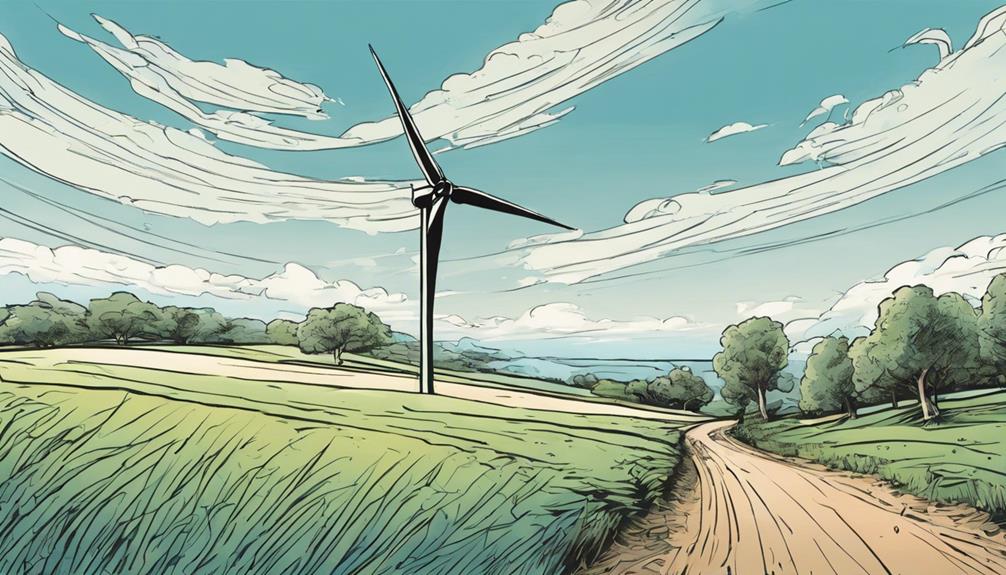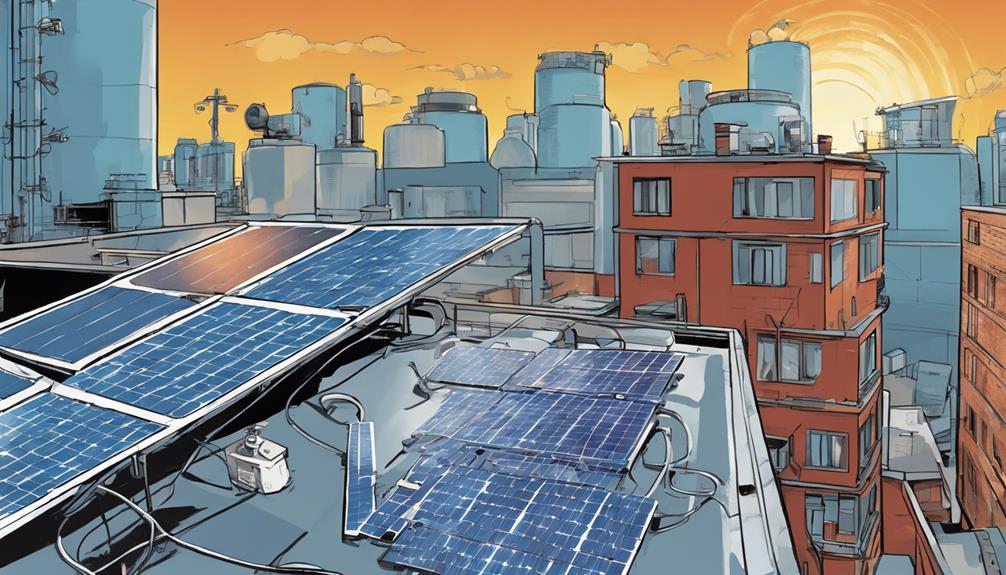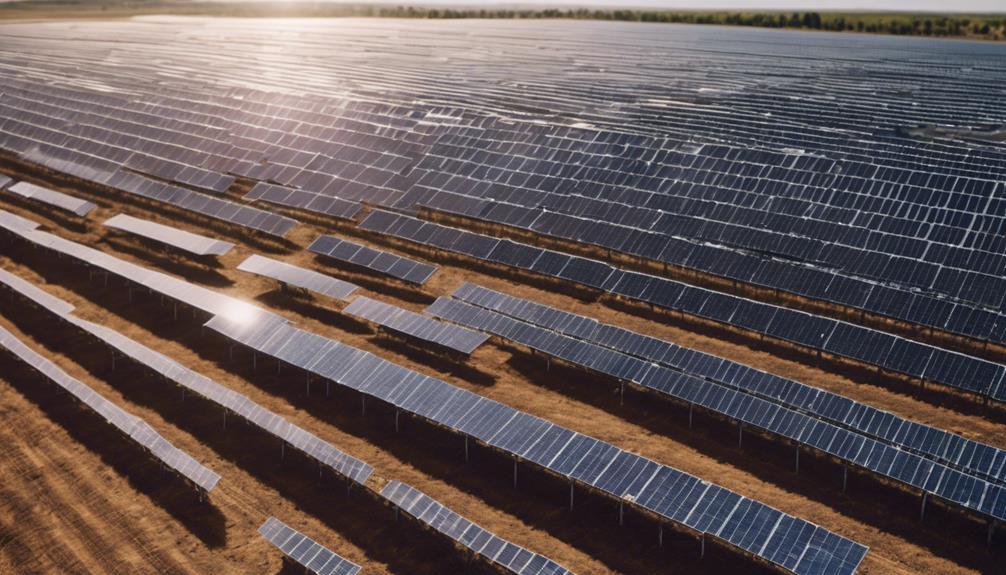When it comes to harnessing the power of wind energy, I've found that understanding the factors that influence a wind turbine's rotation frequency is vital. Wind speed directly impacts rotation speed, and larger blades capture more wind energy. Turbulent winds and fluctuations also affect rotation, making optimization essential for efficient energy production. Turbine type and size influence rotation frequency, and blade design and performance play a significant role. By grasping these factors, I can discover the secrets to maximizing energy production – and I'm about to explore them further.
Key Takeaways
- Wind speed directly impacts rotation frequency, with higher speeds resulting in increased rotations per minute.
- Larger blades capture more wind energy, leading to enhanced rotation frequency and energy production.
- Turbine design and size significantly influence rotation frequency, with larger turbines generating more electricity per rotation.
- Regular maintenance is essential to maximize rotation speed and reduce mechanical losses, ensuring optimal energy production.
- Monitoring wind speed and optimizing turbine design and size are crucial to balancing factors and enhancing energy production and efficiency.
Key Factors in Rotation Speed
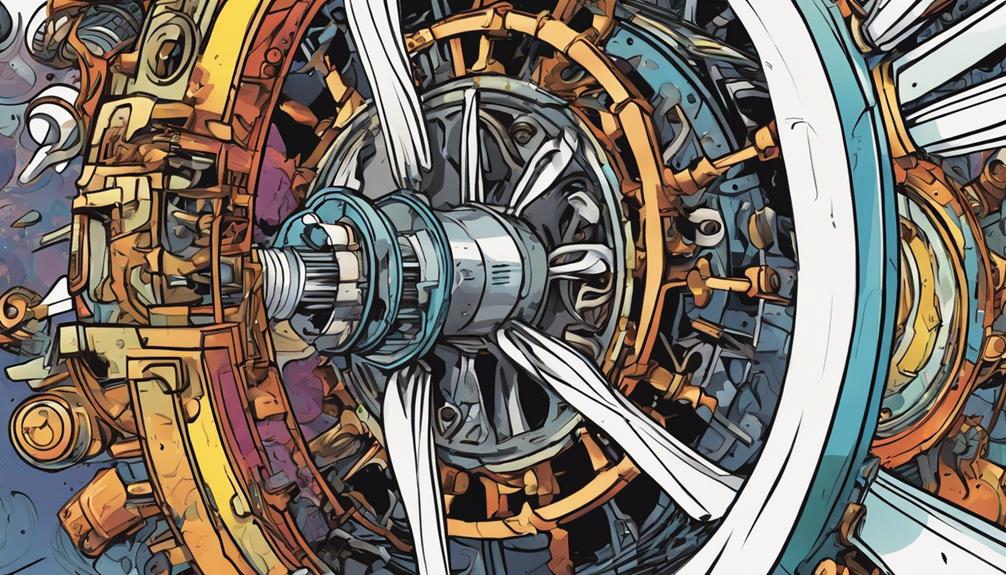
When it comes to wind turbines, I've found that two key factors – wind speed and blade size – play a significant role in determining the rotation speed of the turbine. The faster the wind speed, the faster the turbine rotates. Similarly, larger blades capture more wind energy, leading to faster rotations.
Turbulent winds and wind speed fluctuations also impact the rotation speed, making it essential to optimize these factors for efficient energy production. Additionally, the type and size of the turbine itself affect the rotation frequency and overall efficiency.
Blade Design and Performance

As I explore the intricacies of wind turbine design, I realize that the blade's material, shape, and curvature are carefully engineered to balance strength, weight, and cost, ultimately impacting the turbine's performance and energy output. The aerodynamic principles guiding blade design optimize lift and reduce drag, allowing the turbine to capture maximum wind energy.
Material selection is essential, as it affects blade performance, project viability, and maintenance needs. I've learned that the ideal blade shape and curvature are pivotal for efficient energy conversion. By understanding these design elements, wind turbine manufacturers can create more efficient and effective blades, leading to increased energy production and reduced costs.
Wind Speed and Turbine Spins
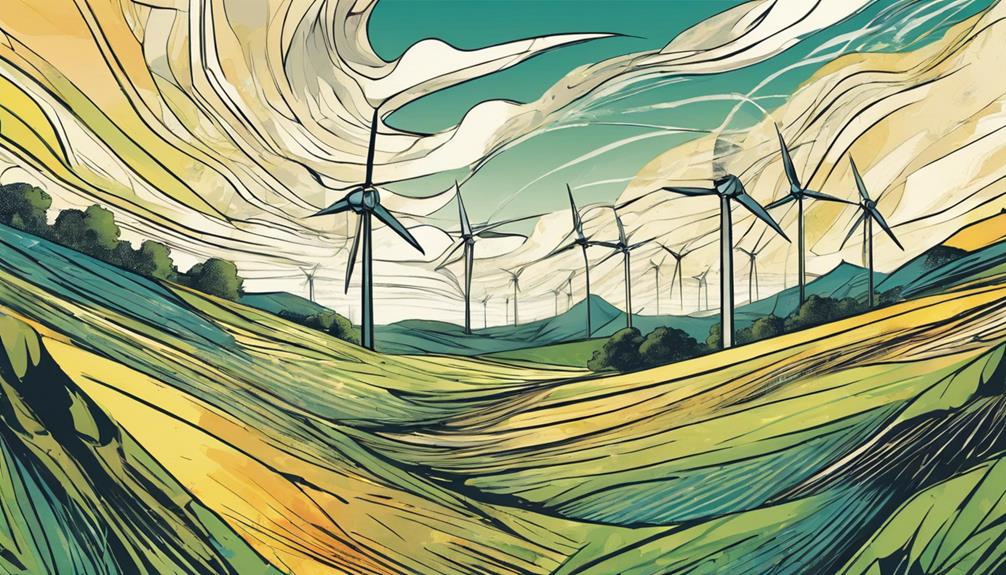
Higher wind speeds directly translate to increased rotations per minute. I'm excited to explore the specifics of how wind patterns influence turbine spins and energy production.
As I investigate further, I've found that wind speed has a significant impact on turbine performance. Here are some key takeaways:
- Wind speed increases energy production exponentially: A small increase in wind speed can lead to a significant boost in energy output.
- Wind patterns affect turbine spins: Understanding wind patterns is essential for maximizing energy production, as turbines can be optimized to capture the most energy from prevailing winds.
- Turbine design matters: Different turbine designs respond differently to varying wind speeds, making design optimization crucial for efficient energy production.
- Maintenance is key: Regular maintenance guarantees that turbines operate at peak performance, minimizing mechanical losses and maximizing rotation speed.
Impact of Turbine Size and Type
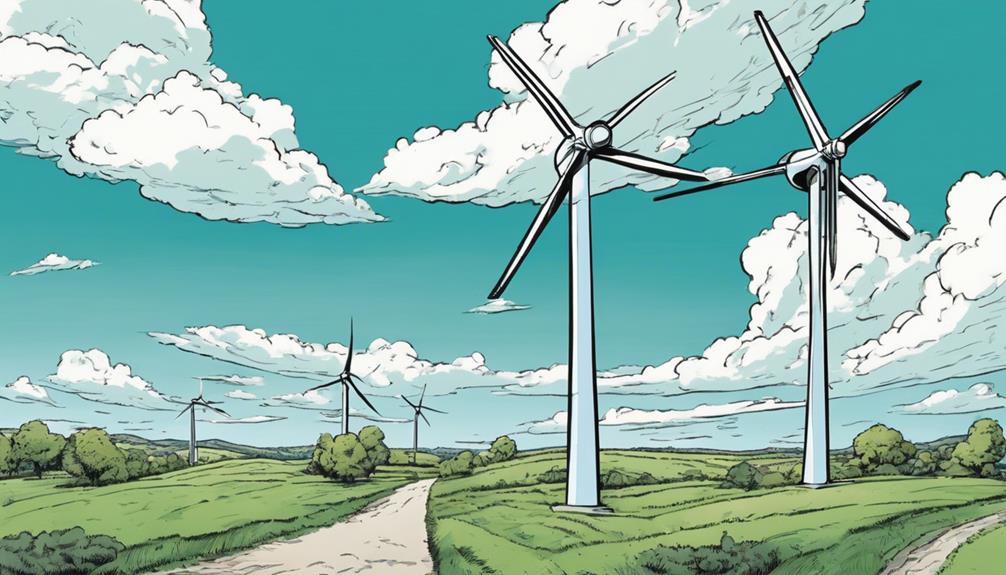
I've found that the size and type of wind turbines directly influence their rotation rate, with larger, more efficient turbines generating more electricity per rotation.
The aerodynamic characteristics of different turbine designs vary significantly, affecting how they harness wind energy. For example, larger turbines with longer blades can capture more wind energy, resulting in faster rotation speeds. On the other hand, smaller turbines may be more suitable for areas with lower wind speeds.
Regular maintenance is also important to ensure peak performance, as mechanical losses can reduce rotation speed.
Optimizing Energy Production
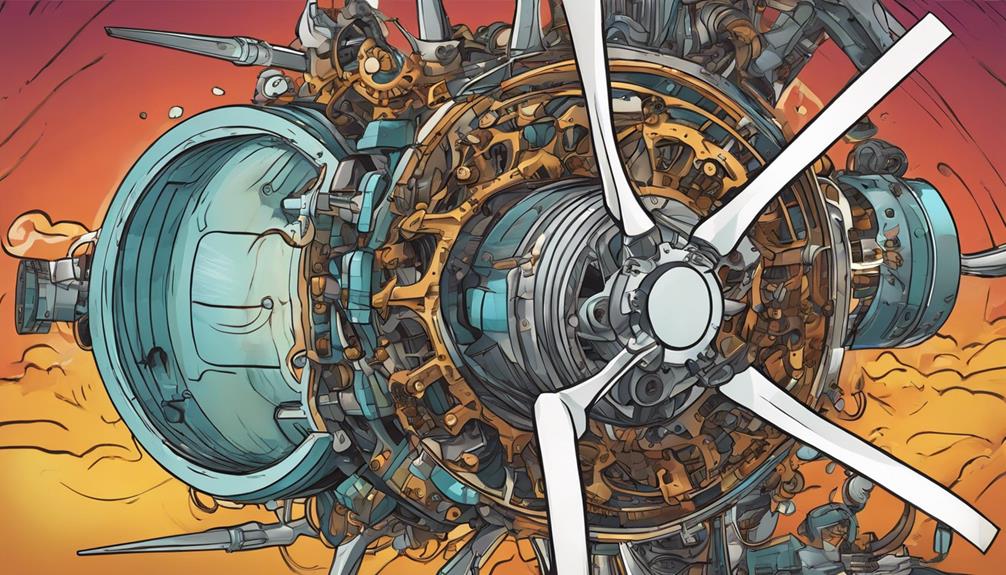
By carefully balancing turbine size, blade design, and wind speed, we can enhance energy production and maximize the efficiency of our wind turbines. As we've discussed earlier, these factors have a significant impact on rotation frequency and energy output.
To get the most out of our wind turbines, we should:
- Monitor wind speed: Higher wind speeds lead to faster rotations and more energy production.
- Enhance blade size: Larger blades capture more wind energy, but also increase costs and maintenance needs.
- Select the right turbine size and type: Different designs have varying aerodynamic characteristics, affecting rotation speed and efficiency.
- Perform regular maintenance: Proper maintenance reduces mechanical losses and improves rotation speed, ensuring enhanced energy production.
Frequently Asked Questions
How Do Gearbox Failures Affect Wind Turbine Rotation Frequency?
'I've found that gearbox failures greatly affect wind turbine rotation frequency, causing slower rotations and reduced energy output. Regular maintenance is essential to prevent these failures and maintain peak performance.'
Can Wind Turbines Operate Efficiently in Low-Wind Speed Areas?
"I've explored how turbine size and type impact rotation frequency, and I'm convinced that, yes, wind turbines can operate efficiently in low-wind speed areas by optimizing blade design and turbine placement."
What Is the Ideal Rotor Diameter for Offshore Wind Farms?
When it comes to offshore wind farms, I've found that an ideal rotor diameter is around 120-150 meters, as it maximizes energy production while considering installation and maintenance costs.
How Does Icing Impact Wind Turbine Rotation Speed and Efficiency?
Icing notably reduces wind turbine rotation speed and efficiency by adding weight, altering aerodynamics, and increasing drag, forcing turbines to slow down or even shut down to prevent damage.
Can Wind Turbines Be Retrofitted for Improved Rotation Frequency?
"I've wondered if wind turbines can be retrofitted for improved rotation frequency. Thankfully, yes, upgrading blade designs, optimizing turbine size, and fine-tuning aerodynamics can boost efficiency and rotation speed."
What Factors Influence the Rotation Frequency of Wind Turbines at Prime Sites?
The key factors for prime sites that influence the rotation frequency of wind turbines include wind speed, air density, and turbine blade length. Higher wind speed and lower air density result in faster rotation, while longer turbine blades can generate more power with the same wind speed.
What Role Does Gearbox Rotation Frequency Play in Wind Turbine Power Generation?
The wind turbine gearbox secrets unveiled include the crucial role of gearbox rotation frequency in power generation. The rotation frequency determines the speed at which the turbine blades spin, directly impacting energy production. Optimizing the gearbox rotation frequency is essential for maximizing power output and overall efficiency of the wind turbine.
Conclusion
As I stand in awe of these spinning giants, I realize that the symphony of rotation frequency is a delicate dance of design, wind, and aerodynamics.
The subtle nuances of blade curvature, turbine size, and wind whispers all converge to create a harmonious hum of energy production.
By grasping these intricate factors, we can fine-tune the rhythm of rotation, accessing the full fury of wind power and harnessing the breeze with precision.
